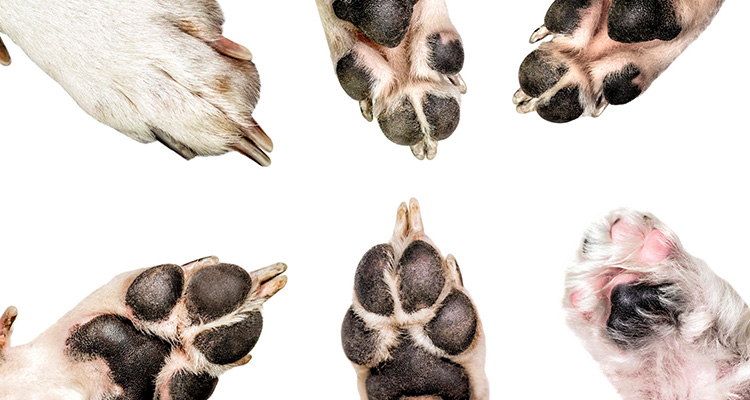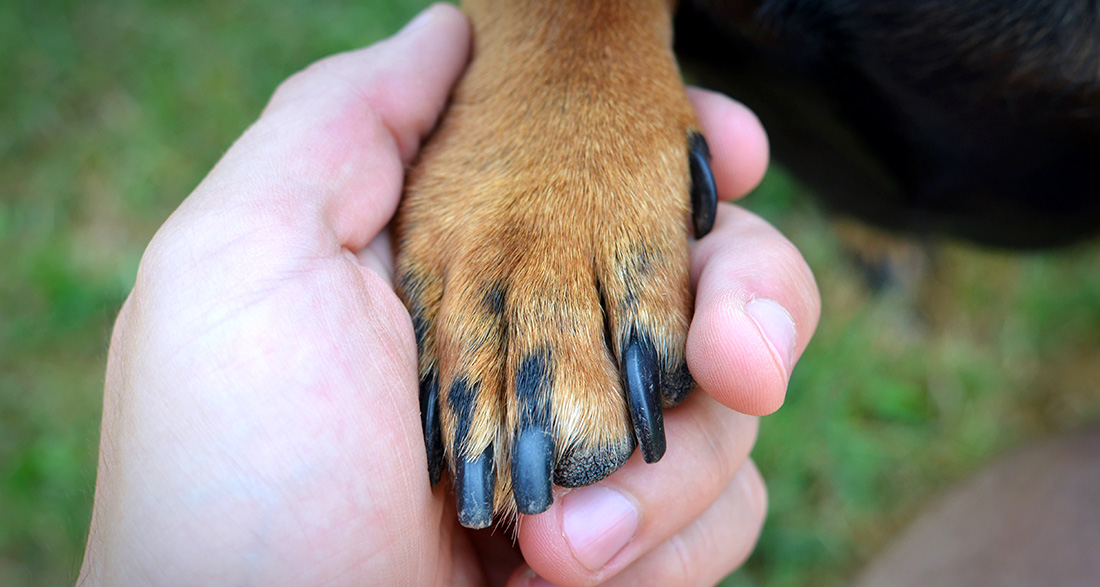If you take a closer look at your dog’s feet, how many nails or claws do you see? That’s right, usually five on the front paws and four claws on each hind paw. But wait a minute. There’s an additional nail at the upper, inner part of the paw. That’s the so-called dewclaw, also known as the wolf claw. It resembles—at least in terms of its position—the human thumb. Some dog breeds even have them on both front and hind paws. They seem to have no real function. Or do they?
Why do dogs have dewclaws?
Dogs, cats, and other mammals—all of them have it: the so-called dewclaw. While most quadrupeds have them on the front paws, there are some dog breeds, such as the Pyrenean Mountain Dog or the French Briards, that also have them on the hind paws. But do they serve any purpose if they don’t even touch the ground and are just… there?
The online portal “PetMD,” which focuses on the health of our beloved pets, explains that the front dewclaws are less movable. The reason: They are attached to tendons and bones, while the hind claws sometimes hang only on the skin. Simplified, one could say that the front dewclaws form the counterpart to our thumbs, whereas the hind dewclaws are like the big toes of the animals. Some mammals have evolved to the point where they no longer need their hind dewclaws. However, the front claws have an important function.
The front dewclaw provides additional grip

“When dogs run, their front paws often bend to the point where their dewclaws touch the ground. At high speeds—especially when turning—or on slippery surfaces, the dewclaws provide additional grip and help stabilize the wrist,” explains veterinarian Jennifer Coates on the “PetMD” website.
Even when a dog needs to hold something, like its toy, climb, or lift itself out of the water, the front dewclaws are useful. The hind claws are too unstable to serve a clear purpose, the veterinarian further explains.
Should dewclaws be removed?
The front dewclaws should preferably not be removed, as they have an important function and help the dog in its daily life. Therefore, experts generally advise against removing healthy claws. Unless they can be associated with a disease, such as a tumor growing precisely at the claw.
Some people would like to have the hind, weaker claws removed because they fear injuries or because they do not like the look of them. However, since only a few dog breeds have dewclaws on their hind legs anyway, this issue is not widespread; surgery is rather uncommon or unnecessary. If you still opt for a surgery to remove the additional claws, it should be performed while the dog is still a puppy, as Coates also explains.
Paw and claw care is crucial

Nail care is important for dogs, just like for us humans. If the paws and claws of your quadruped are regularly maintained, the bonus claws should generally not cause too much concern. They are treated no differently than the other “paw nails”: If your dog’s claws wear down regularly because your furry friend is very active, you don’t need to worry much. However, if your dog is of the more laid-back type, the nails need to be regularly trimmed to maintain a healthy length. The only difference: Since the dewclaw does not come into contact with the ground, it cannot be naturally worn down. This means it may need more frequent trimming if necessary.


